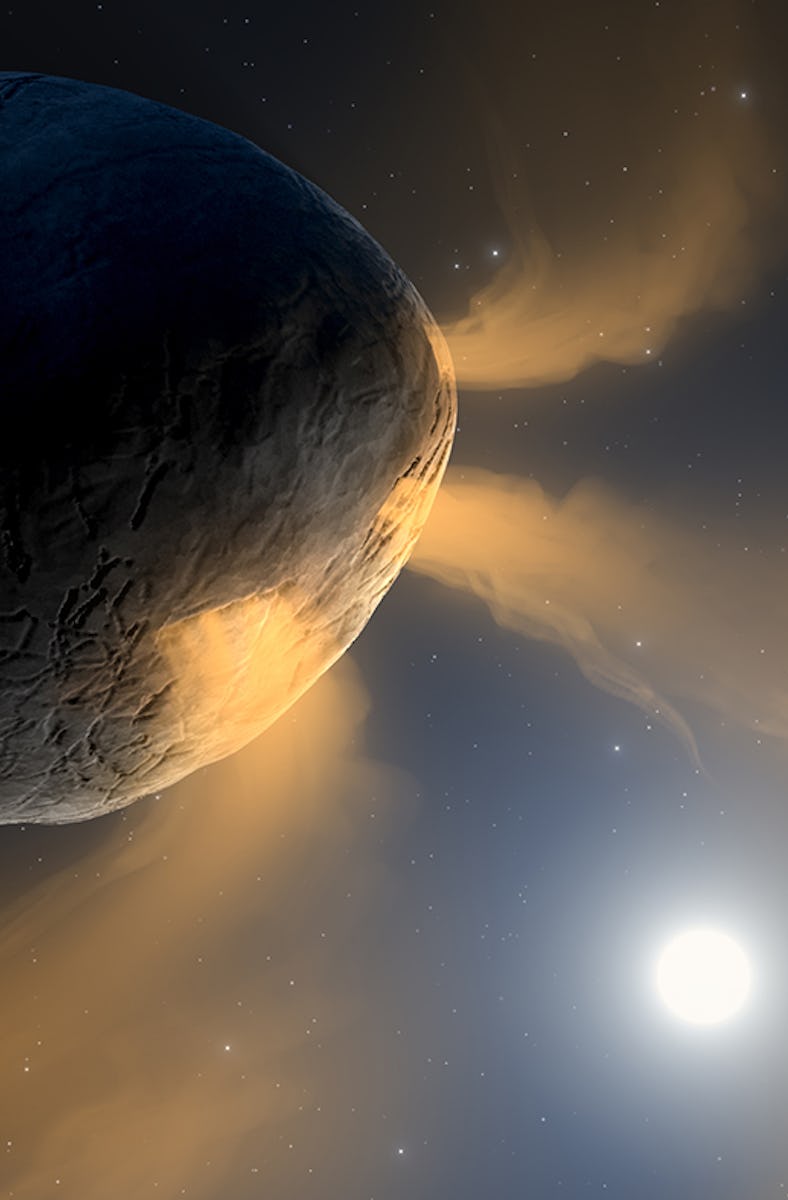The Year’s Most Spectacular Meteor Shower Is Upon Us
The Geminid meteors will peak this Wednesday night.

The annual Geminid meteor shower will peak around 2 AM on Wednesday night, with about 120 meteors an hour streaking across the night sky. Here’s everything you need to know about where the Geminid meteors come from, how to see them, and what to expect from the 2023 Geminids.
This week is prime Geminid meteor viewing time.
When is the Geminid Meteor Shower?
This year’s Geminids started on November 19 and will continue through December 24, but this week is prime viewing time.
The peak of this year’s Geminid meteor shower happens at around 2:00 AM local time on Wednesday night, but if you’re not a fan of late weeknight outings, you still have an excellent chance to see it. For the next several days, Earth will be passing through the densest part of the trail of dust and tiny space rocks that create the Geminids’ bright fireballs in the sky, so weekend meteor viewing should be well worth bundling up and leaving city lights behind for. Meteors start being visible much earlier in the night, so you don’t actually have to wait up terribly late to see the meteor shower close to its peak.
If you’re lucky enough to have clear weather this week, you should have an excellent chance to see the Geminid meteor shower in all its glory. At the moment, the Moon is just a tiny, sliver-thin waxing crescent, so the sky should be nearly at its darkest: a perfect background for watching for meteors. The Geminids are known for bright streaks of light, and at peak, they can produce nearly 120 meteors an hour (which is a couple of meteors every minute).
How to Watch the Geminid Meteor Shower
Thanks to a cool optical illusion, the Geminid meteors appear to radiate from a point somewhere in the constellation Gemini (sort of like that classic Starfield screensaver from Windows 95). But since the dusty bits of asteroid debris that create the meteors can fall anywhere in Earth’s upper atmosphere, you’ll see meteors flashing across the entire night sky. The best bet is to find a viewing spot with a good view of as much of the sky as possible and lie on your back looking upward.
Darkness is essential! Get as far as possible from city lights, and turn off your phones, headlights, and flashlights (please choose someplace safe and legal). Give your eyes about half an hour to adjust to the darkness. And be patient; just because the Geminids offer 120 meteors an hour on average doesn’t mean you’re guaranteed a meteor every thirty seconds.
This artist’s illustration shows asteroid Phaethon being heated by the Sun.
Where do the Geminid Meteors Come From?
Every year, as our planet zips around the Sun, Earth crosses through several trails of dust and tiny rocks left behind by comets whose orbits cross ours. Bits of dust and rock patter against Earth’s upper atmosphere, like bugs hitting a windshield. As these bits of space debris burn up amid the tremendous friction of suddenly hitting air (which is not at all like bugs hitting a windshield, as it happens), they create big, bright flares and streaks of light, way out of proportion to their actual size.
Each of these trails lies across a particular part of Earth’s orbit, so we cross them at particular times every year. The debris trail that spawns the Geminids crosses our path in mid-December every year, though the exact timing may vary by a day or two.
But that’s where most of the Geminids’ similarities to other meteor showers break down, because the source of this meteor shower is, to put it in technical terms, super weird.
The Geminids are debris left in the wake of the asteroid 3200 Phaethon (just Phaethon to its friends). And that’s odd because asteroids “shouldn’t” leave debris trails; that’s more of a comet trait.
As a comet swoops in close to the Sun, its icy body heats up so much, so quickly, that much of the ice jumps straight from frozen solid to jets of gas. That erupting gas creates one of a comet’s two tails, but it also dislodges dust and bits of rock from the surface of the comet, creating a second tail — and the debris trails that turn into meteor showers when Earth stumbles across them. But asteroids don’t do that.
Phaethon, though, is weird. It’s on a stretched-out, elliptical orbit like a comet, which swings out beyond Mars before swooping inward to pass 15 miles closer to the Sun than Mercury. On that inner leg of the journey, Phaethon gets heated up to nearly 1,400 degrees Fahrenheit. The rocky little asteroid has no ice to vaporize, but minerals deep inside it release sodium, carbon dioxide, water vapor, and sulfur gas. All that gas fizzing out of cracks in the asteroid raises dust from its surface, leaving behind a messy trail for Earth to blunder into.